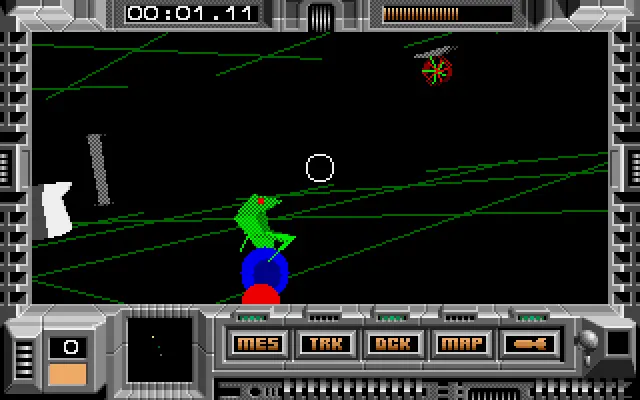No ‘a’, so it’s perfect for ordering some piss.
- 1 Post
- 134 Comments

 341·5 days ago
341·5 days agoImpressive, since “network effects” are what keeps people on a platform. Why move off Xitter or FB when everyone’s on there, and not on the new place? Keep moving a significant fraction of a million people every week, and pretty soon, it’ll be where everyone is.
My partner, who is very non-technical, signed up for a BlueSky as well this week: “all the teacher blogs have declared that they are moving over”. Looks like everyone has had enough.

 1·5 days ago
1·5 days agoWriting this on a Tuxedo Pulse 14 gen 3 - great laptop, flawless Linux support and a coding workstation. Perfect for a bit of eg. Disco Elysium or Crusader Kings 3 on the go, but it’s no gaming machine; it has a lot of pixels for a Radeon 780M to push. They do have a list of gaming laptops, though, if you wanted a speciality machine?

 7·13 days ago
7·13 days agoHaving had one of the old Windows phones with a keyboard dumped on me at an old workplace, can confirm it’s completely possible for a phone to have a keyboard and be a complete piece of shit.
A good phone with a good keyboard may have some use cases. If you do a lot of writing but not any more computing power or screen space than a phone has, plus you want to be doing that on the move, then yeah. For me, can shitpost on forums using my phone in my spare time, and dealing with on-call work issues - having multiple tabs of Jira and Slack open, for instance - just isn’t really practical on a small screen.
If your job is very email-centric, then yeah, sure. Blackberry were very good for just having the stuff you need - email, vpn, ‘corporate’ office documents - in a form that worked.
True. Although Calvin looks to be only rotating the paper by 90°, which would work as long as the original line is continuously increasing on both axes. Not so much “upside down” as “right-side up”, tho.

 6·23 days ago
6·23 days agoNice art, too. I think that scrolling down might ruin the pacing? but that’s some beautiful spacing and colouring.

 26·30 days ago
26·30 days agoAssuming that these have fairly impressive 100 MB/s sustained write speed, then it’s going to take about 93 hours to write the whole contents of the disk - basically four days. That’s a long time to replace a failed drive in a RAID array; you’d need to consider multiple disks of redundancy just in case another one fails while you’re resilvering the first.
Writing in ASM is not too bad provided that there’s no operating system getting in the way. If you’re on some old 8-bit microcomputer where you’re free to read directly from the input buffers and write directly to the screen framebuffer, or if you’re doing embedded where it’s all memory-mapped IO anyway, then great. Very easy, makes a lot of sense. For games, that era basically ended with DOS, and VGA-compatible cards that you could just write bits to and have them appear on screen.
Now, you have to display things on the screen by telling the graphics driver to do it, and so a lot of your assembly is just going to be arranging all of your data according to your platform’s C calling convention and then making syscalls, plus other tedious-but-essential requirements like making sure the stack is aligned whenever you make a jump. You might as well write macros to do that since you’ll be doing it a lot, and if you’ve written macros to do it then you might as well be using C instead, since most of C’s keywords and syntax map very closely to the ASM that would be generated by macros.
A shame - you do learn a lot by having to tell the computer exactly what you want it to do - but I couldn’t recommend it for any non-trivial task any more. Maybe a wee bit of assembly here-and-there when you’ve some very specific data alignment or timing-sensitive requirement.

 11·1 month ago
11·1 month agoWhy buttplug for tachyons?
Yeah. Doesn’t take much optimising of disk writes to make things run much better on a Pi; they’re quite capable machines as long as disk i/o isn’t your limiting factor. Presumably the devs have been doing some tidying up.
My workplace is a strictly BitBucket shop, was interested in expanding my skillset a little, experiment with different workflows. Was using it as a fancy ‘todo’ list - you can raise tickets in various categories - to remind myself what I was wanting to do next in the game I was writing. It’s a bit easier to compare diffs and things in a browser when you’ve been working on several machines in different libraries than it is in the CLI.
Short answer: bit of timesaving and nice-to-haves, but nothing that you can’t do with the command line and ssh. But it’s free, so there’s no downside.
Ah, nice. Had been experimenting with using my Raspberry Pi 3B as my home Git server for all my personal projects - easy sync between my laptop and desktop, and another backup for the the stuff that I’d been working on.
Tried running Gitea on it to start with, but it’s a bit too heavy for a device like that. Forgejo runs perfectly, and has almost exactly the same, “very Github inspired” interface. Time to run some updates…

 1·1 month ago
1·1 month agoMost common example would be a bicycle, I think - your pedals tighten on “in the same direction the wheel turns” as you look at them. So your left pedal has left-hand thread, and goes on and comes off backwards.
The effect of precession also means that you can tighten the pedals on finger tight and a good long ride will make them absolutely solid - need to bounce up and down on a spanner to loosen them.

 6·2 months ago
6·2 months ago
Oh yeah. Partying like its 1989 and I’ve booted up my Amiga. Let’s get some unicycling friends in here and do some hacking in 3D.

 13·2 months ago
13·2 months ago“Register bit twiddling.” Setting all the modes that all their various cards can operate in, with the associated code for sending the bit updates over the connection bus. Tedious stuff that’s very prone to copy-paste errors if written by hand.
At some point you have to take AMDs word for it that these codes = this functionality, but if the right graphics come out then it can’t be so wrong.
Fake mews, surely? And yeah, this looks better than my Monday.

 111·2 months ago
111·2 months agoWe’ve found it to be the “least bad option” for DnD. Have a Discord window open for everyone to video chat in, have a browser window open with Owlbear Rodeo or Foundry / Forge for your tokens and character sheets, all works smoothly enough. The text chat is sufficient for sending the DM a private message; for group chat to share art of the things you’ve just run into or organise the next session.
Completely agree that for anything “less transient”, then the UX is beyond awful and trying to find anything historical is a massive PITA.

 20·2 months ago
20·2 months agoShould have used Vim instead, that’s a real text editor. No-one who starts using it ever moves on to something else.






IVEBEENUSINGTHISKEYBORDFORWHOLEMONTHNDMMOREEFFICIENTTHNIVEEVERBEENBEFORE